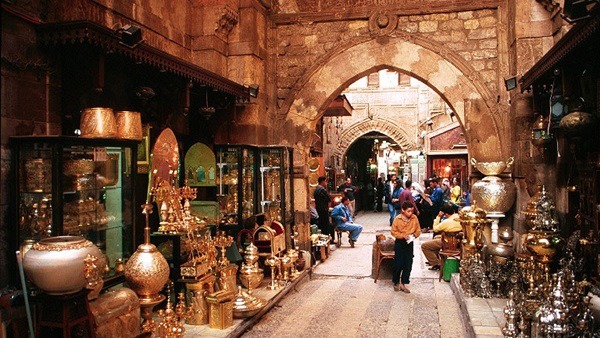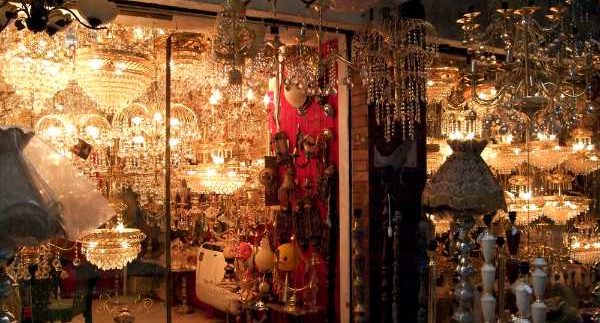Cairo has always been a market city. In the oldest paintings depicting the ancient grounds, you will find Cairo’s marketplaces to be front and center. Being the fascination and destination of travelers and locals throughout the centuries, join us on a tour in some of Cairo’s oldest and most renowned marketplaces.
Al Ghoreya

Al Ghoreya street or neighborhood, is located in historic Islamic Cairo in the Gamaleya area. Established by the last Memlouk sultan, Sultan Qansuh Al-Ghuri, this market borders Al Azhar mosque and the outstanding Khan Al Khalili. The architecture of Al Ghoreya is an extension of the iconic structures found in Al Moez street constituting a corner stone of Islamic Cairo.
Dubbed as an open museum, the shops known as “Wekalat” instantly charm and allure thousands of daily visitors with incense, accessories, textiles, and workshops dedicated to manufacturing the Egyptian traditional head-wear, the Tarboosh. Al Ghoreya is frequented by merchants, normal shoppers, and loved by art students.
We asked students at the Faculty of Fine Arts, Helwan University, about their favorite markets and their answers were overwhelmingly Al Ghoreya. Samya Desouky, a crafter and senior student majoring in interior design, detailed her excitement every time she frequented the market looking for new brushes or supplies for her own projects.
She elaborated on the grandiose textiles draping the alleys of the market and the specialized shops dedicated for every single item you may think of. However, she also drew our attention to a downside of local markets that is rarely discussed; the abundance of harassment. Walking around is never an easy feat for a woman, especially in such a crowded and busy area; we suggest keeping that in mind. Nevertheless, Al Ghoreya is definitely worth a visit.
Al Muski

This neighborhood was named after Prince Ezzeldin Mousk, a relative of Sultan Saladin. From the name itself, you can guess the rich history behind what is now the layman’s haven and refuge from excessively priced items. Despite being nearly 800 years old, Al Muski is marked for its French and Belgian style architecture mixed with traditional Islamic motifs and buildings.
Everything at Al Muski is sold at wholesale prices. Sellers describe it as the baseline for all other markets as it targets low-income citizens. Without such informal regulation, prices would soar out of control. You can find everything at Al Muski, but it is most known for its low priced food products and many local Qahwas.
Darb El Barabra

Many who know their ins and outs know that Darb El Barabra is the place to head to when looking for home decor and set pieces. This marketplace is loaded with antiques and every little trinket from candles to macrame. Its chandelier shops are especially mesmerizing. Darb El Barabra is also known for all types of hand-crafted oriental candy. When it’s near the holiday of Moled El Naby (The Prophet’s day of birth, PBUH), you can surely find an endless row of sweets.
Cairo has so much to offer, and plenty to explore. With conservation and preservation efforts on the rise, we hope that our beloved Cairo markets get taken care of, especially the merchants and craftspeople that keep the place alive. Have you been to any of these markets? Let us know!



